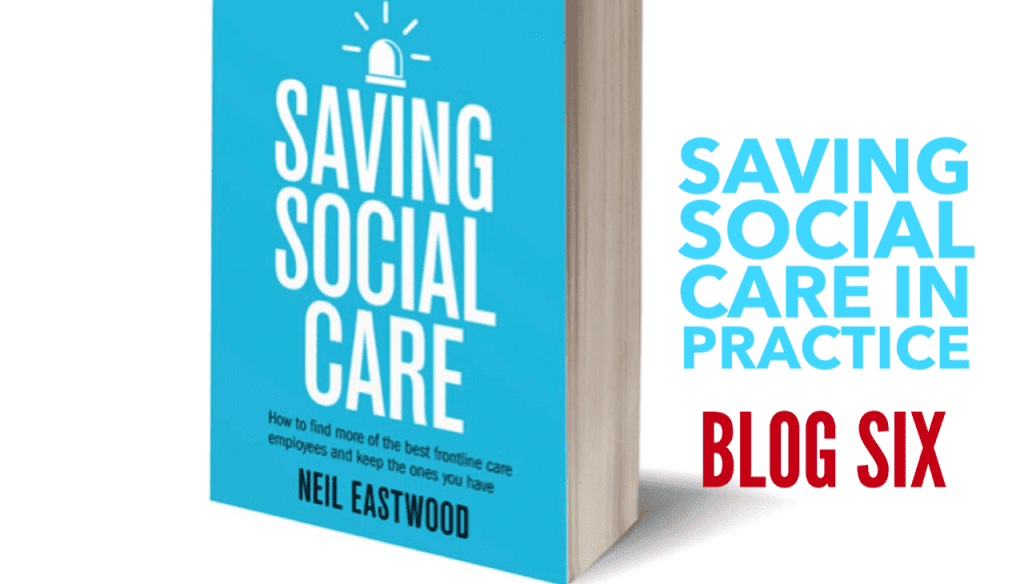
As getting and keeping great staff is the greatest challenge in health and social care, what can we learn by thinking about it from the candidates perspective? In our next two blogs we think about approaching recruitment from the candidate’s perspective. If the process was designed around their experience, and not just in terms of an efficient organisational process, then what would this look like? I asked Neil what he would recommend if we were starting with a blank piece of paper, and resources were no option, then how would he design the ideal ‘customer journey’ for a candidate? What would we see if we were looking at it from that perspective?
Neil: Well, you used the right word ‘Customer’ to give us the answer. Future employees are not seen the same way as the potential customers for our services are, yet there is no shortage of demand. So, I would start by picking out a range of ‘ideal candidates’ and think about how they would like to interact with their future employer. I would try to offer a choice of ways to make contact, use real first names of who is their ‘account manager’ and try to make it possible to allow them to make contact after hours if necessary. Being responsive and explaining what the next step is and when they will expect to hear back is important too. You should also create a means for those who are at the early stage of interest to be kept informed of key events and news.
An ideal journey may well vary for different applicants, but if resources were limitless then running regular ‘discovery’ sessions with no obligation, at times convenient to applicants, would be a key feature. I would have a crèche available and also run these at weekends, laying on refreshments.
Building a candidate pool is much easier now with social media groups, simple tools to help you create attractive email newsletters and the ability to segment your audience. The very nature of Community Circles continually brings you into contact with lots of local people with a shared vision. I think technology is such an enabler here. You could even consider an app that coordinates a lot of this. I am starting to hear of those in social care now.
This is changing the way I think about recruitment, from being an event, to a continuous process of identifying people, and connecting with them, and keeping in touch over time. A good place to start is by reviewing people’s experiences and learning from them about how to improve. If I think of recruitment in five stages or touch points, these would be:
The information provided about the role, their conversation with one of the team, then the recruitment pack that we sent people, their experience of the recruitment workshop, and finally how we informed people about the outcome.
I used these five stages and developed a simple evaluation that I used with the unsuccessful candidates. I sent a personal email to each of them, and asked them to help us learn how to improve.
Your recruitment experience
We tried to design a process that reflects our values, and we want to continually develop and learn.
Please could you give us your views on the following
1.Information – the advert, the ‘Could this be you?’, the role description and the ‘week in the life of’
How did we do? Please give us a number between 1 and 10 where 1 – very poor and 10 – amazing.
Your number:
Please tell us what worked well about this
How could we improve this?
2. First conversation with Harriet
How did we do? Please give us a number between 1 and 10 where 1 – very poor and 10 – amazing.
Your number:
Please tell us what worked well about this
How could we improve this?
3. Recruitment pack – the information we sent you
How did we do? Please give us a number between 1 and 10 where 1 – very poor and 10 – amazing.
Your number:
Please tell us what worked well about this
How could we improve this?
4.The Recruitment workshop experience
How did we do? Please give us a number between 1 and 10 where 1 – very poor and 10 – amazing.
Your number:
Please tell us what worked well about this
How could we improve this?
5. After the Recruitment workshop, informing you of the outcome
How did we do? Please give us a number between 1 and 10 where 1 – very poor and 10 – amazing.
Your number:
Please tell us what worked well about this
How could we improve this?
In the next blog I will explain how people responded, what we learned and what we need to do differently (and why I had to apologise to two people).
There was a problem reporting this post.
Please confirm you want to block this member.
You will no longer be able to:
Please note: This action will also remove this member from your connections and send a report to the site admin. Please allow a few minutes for this process to complete.